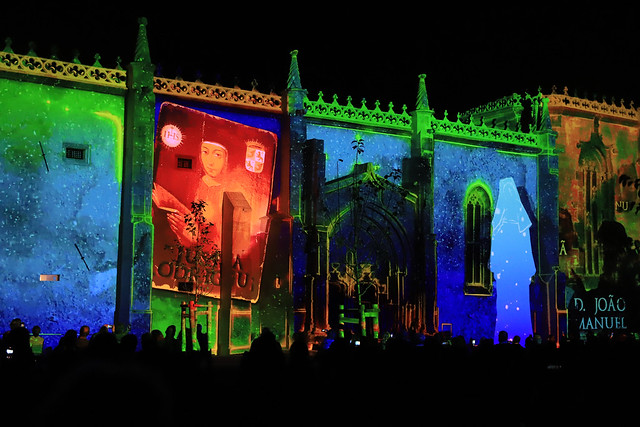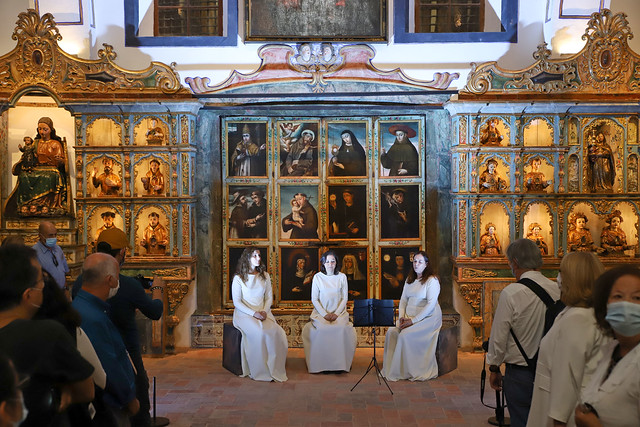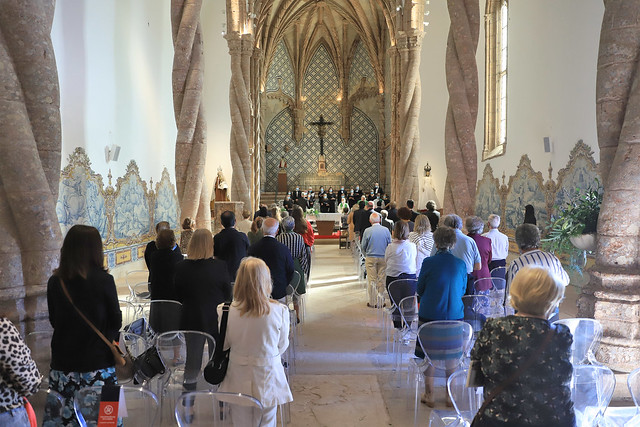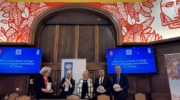Monastery of Jesus in Setúbal in Portugal: from Europe’s most endangered monument to Europe’s heritage wonder
The Monastery of Jesus in Setúbal, a gem of Europe’s heritage dating from the 15th century, has been fully rehabilitated and given new life as a museum, housing the city’s rich art collection. In a video message conveyed on the occasion of the opening ceremony of the Monastery of Jesus held on 10 October, our Secretary General stated: “Europa Nostra and our partner the European Investment Bank Institute are delighted that the Monastery of Jesus ceased to be among Europe’s most endangered monuments and has become one of Europe’s heritage wonders.” Sneška Quaedvlieg-Mihailović congratulated all those who have contributed – under the leadership of the Municipality of Setúbal and its Mayor Maria das Dores Meira – to the “renaissance” of this exceptional monument.

“The exemplary rehabilitation of the Monastery of Jesus provides real proof that cultural heritage is a solid bridge between the past, the present and the future of our Europe,” emphasised the Secretary General of Europa Nostra.
The Monastery of Jesus is one of the first examples of the Portuguese Late Gothic style, known as Manueline, which drew inspiration from architectural styles throughout the Portuguese Empire. It has been listed as a National Monument since 1910. Recognised as a tangible witness of Europe’s shared history – having served as the setting for the ratification of the signature of the Treaty of Tordesillas in 1494 between Spain and Portugal which paved the way for Europe’s expansion both to the Americas and to the Far East – it was conferred the European Heritage Label by the European Commission in 2011.
During the opening ceremony of the Monastery of Jesus, video messages of congratulations from the President of the Portuguese Republic Marcelo Rebelo de Sousa and the King of Spain Felipe VI were also broadcast.
“After more than two decades of forced closure, this extraordinary historical landmark, this fabulous piece of architecture, which is a central element of the culture and identity of Setúbal, has been returned to our city and to the world,” affirmed the Mayor of Setúbal, Maria das Dores Meira.

The reopening to the public of the Monastery of Jesus was enhanced by a rich cultural programme, composed of live musical and theatrical performances, guided tours of the current exhibition, and a video mapping show with large-scale light projections on the exterior walls of the monument.

In 2012, the Portuguese Historic Houses Association and its President Hugo O’Neill nominated the Monastery of Jesus to the 7 Most Endangered programme 2013. In March 2013, Europa Nostra and the European Investment Bank Institute included the monument on the very first list of 7 Most Endangered heritage sites in Europe.

The rehabilitation project of the Monastery of Jesus, designed by the renowned Portuguese Carrilho da Graça, ran from the end of 2012 to the summer of 2020. It had a total cost of nearly 9 million euros, half of which was financed by the Municipality of Setúbal.

The first phase of the project fundamentally consisted of the structural rehabilitation of the monument, and the total recovery of the western wing, which received part of the collection of the city’s museum and partially reopened to the public in June 2015 (read related news item). The eastern wing and two other rooms were also rehabilitated; and a new building was built to house the technical area of the city’s museum.

The second phase included the rehabilitation of the Church of Jesus, the Cloisters, the High Choir Room, the Chapter Room and other rooms as well as the square in front of the Church and the surroundings of the monument.

In November 2018, on the occasion of the Board and Council meetings of Europa Nostra held in Lisbon, a delegation of some 60 participants visited the Monastery of Jesus and were informed of the state of the major renovation works (read related news item).






